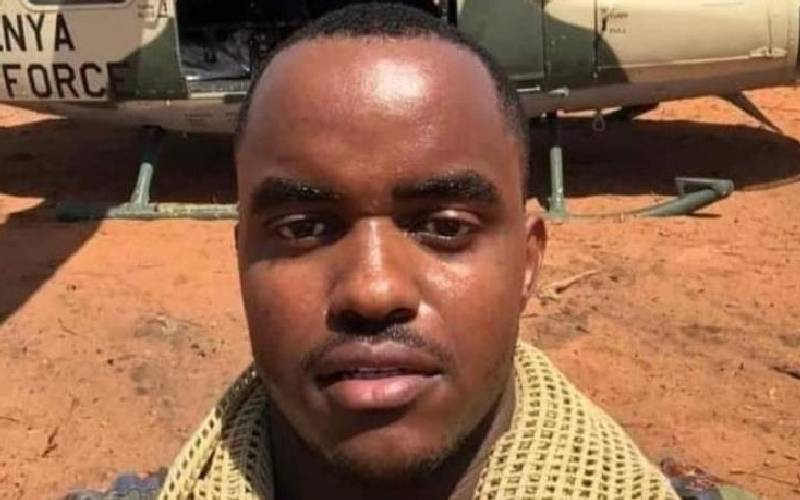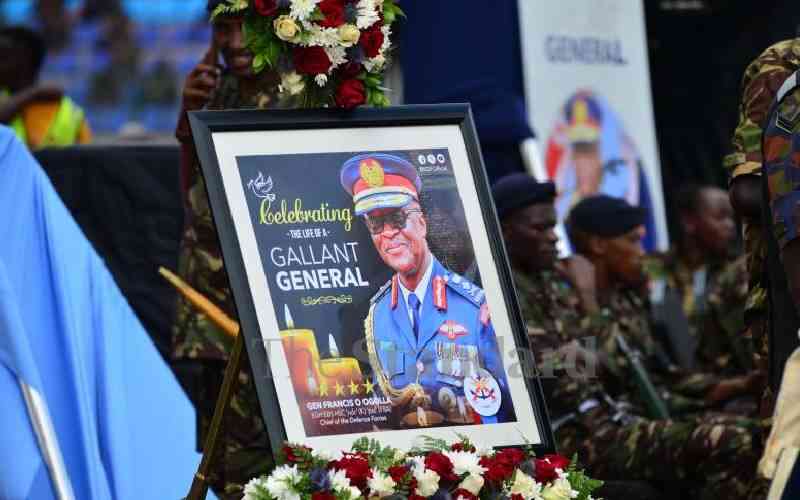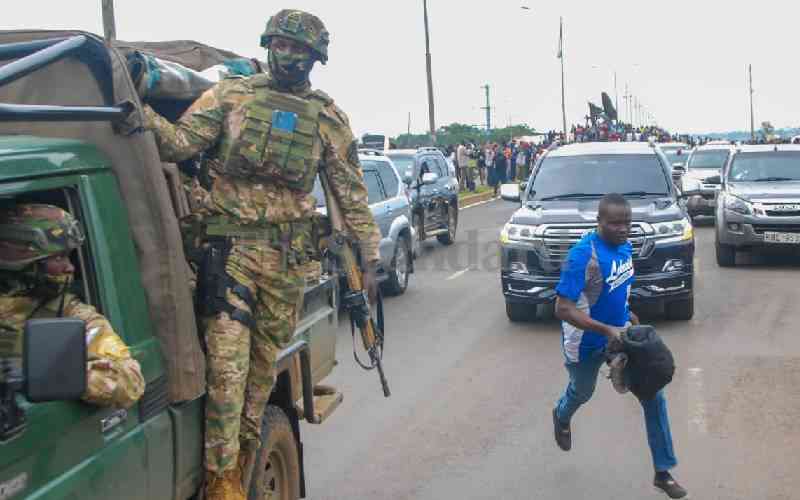By Ally Jamah
On Monday, the probe into the helicopter crash that killed Prof George Saitoti enters a crucial stage as experts dismantle the engine in search of clues on what might have brought it down.
Investigations into the crash that also ended the lives of former Internal Security Minister’s assistant, Joshua Orwa Ojode and four police officers have so far unraveled a series of strange coincidences, including what appears to have been casual handling of the chopper, and a flawed tendering process. As the team led by Justice Kalpana Rawal progresses with the arduous task of getting an answer for Kenyans on whether the crash was an act of sabotage, engine failure or other accident, what the commission has so far unearthed is unsettling and disturbing.
Top aviation and Government experts have made ridiculous confessions, including admissions that the chopper was repaired by a “mysterious” man and that the pilot in charge, who also perished in the crash, was certified by an untrained examiner who went ahead to give her high marks.
The commission has also heard that Eurocopter engineers, without the knowledge of Kenya Police Airwing allegedly changed 11 components.
Missing components
It has also emerged that a scheduled removal and checking of the helicopter’s battery that was scheduled for March 6 this year was not done. That was barely a month before it crashed. The Saitoti family’s lawyer indicated that such an oversight was significant with regard to the chopper’s safety since batteries are used to restart the aircraft if engines fail during flight.
The commission has also been told the chopper had only one primary plight display (PFD) instead of two as agreed in the tender documents before the purchase, meaning what was supplied isn’t what had been tendered for. PFDs help in controlling various crucial aspects of flight including altitude and vertical speed. Each unit is placed in the pilot and copilot’s compartment.
These “gaps” and “incidents”, the commission has so far been told will be crucial for Rawal’s team probing the June 10 crash of police Eurocopter AS 350 in Ngong Forest. They include the admission by Office of the President’s procurement officer Mwangi Njoroge that the right procedure might not have been followed when acquiring the helicopter.
Njoroge stunned Kenyans when he also revealed he did not know whether the special security tender committee verified the safety record of the chopper before it was bought last year.
The account of a mysterious engineer who “repaired” the helicopter two days before it crashed was even more confounding because senior police officers in charge of the plane only knew only one name (Aristide) of the South Africa’s manufacturer’s local contact who is said to have taken the mysterious repairman to the plan to work on some malfunction noticed.
Also curious is the revelation that a gadget that records engine activity was faulty, yet the manufacturer reportedly assured the Government that the chopper could continue flying for at least 200 more hours with the defect. A secret flight by the commandant of the Kenya Police Airwing Rodgers Mbithi, a day before the crash, has also featured in the Commission’s hearings.
Mystery man
Records tabled at the Commission indicate that he flew for 50 minutes but his destination(s) and purpose of the flight remain unknown.
Mbithi has also been asked why he did not fly his bosses on the fateful Sunday morning, although he did not have any engagements.
Stay informed. Subscribe to our newsletter
One of the lawyers has questioned why one of the pilots who perished was only informed of the flight the previous night in what seemed a hurried plan.
Concerns about irregularities in the tendering process, replacement of numerous components by the supplier and apparently poor maintenance of the chopper add to the growing concerns.
Saitoti’s family told the Commission it is ready to demonstrate using experts that “strange events” happened to the chopper before it crashed few minutes after takeoff from Wilson Airport, Nairobi. Through lawyer Fred Ngatia, the late minister’s family said an analysis on the baroscope inspection on the wreckage of the chopper had revealed “strange events”.
Said Ngatia at the start of the inquiry: “Our expert has looked at the baroscope report and the more he looks at it the more strange it looks to him. We want to testify at the earliest opportunity.”
None of the senior Kenya Police Airwing officers who testified before the Commission were able to identify the “mystery man” who worked on the plane for several days, and made substantial changes. The man worked with another engineer allegedly named Aristides, who was appointed by the manufacturers of the helicopter to help the police repair and service the plane during the one-year period of warranty. Johnson Mwangi, the Deputy Commandant and Chief Engineer of the Kenya Police Airwing and the Quality Manager Maurice Ouma Oketch, who supervises maintenance of planes, said they did not know the man or whether he was qualified to do the job.
Mwangi did not know Aristide’s second name either.
“I do not know the man. Aristides, who had unsuccessfully tried to repair faults in the system that controls the engine, brought him in. He said the man was a specialist,” Mwangi said.
Security zone
Lawyer Ken Ogeto of the Kenya Civil Aviation Authority (KCAA) wondered how the chief engineer would allow a “stranger” to repair a police helicopter without ascertaining his qualifications for executing the job.
“Were you not worried that Aristides was calling somebody you don’t know at all to look at the aircraft that is the property of the State?” he asked.
“Aristide made the decision himself to call the other engineer, I did not authorise him to do so. It was an arrangement between the two gentlemen. Engineers often help each other,” replied Mwangi.
The hangar at Wilson Airport in Nairobi where police helicopters are parked and serviced is a high security zone that requires individuals accessing it to get special clearance.
The man called in by Aristides, Mwangi said, removed the FADEC (or the Full Authority Digital Engine Control) that controls engine performance and replaced it with another from South Africa.
 The Standard Group Plc is a
multi-media organization with investments in media platforms spanning newspaper
print operations, television, radio broadcasting, digital and online services. The
Standard Group is recognized as a leading multi-media house in Kenya with a key
influence in matters of national and international interest.
The Standard Group Plc is a
multi-media organization with investments in media platforms spanning newspaper
print operations, television, radio broadcasting, digital and online services. The
Standard Group is recognized as a leading multi-media house in Kenya with a key
influence in matters of national and international interest.
 The Standard Group Plc is a
multi-media organization with investments in media platforms spanning newspaper
print operations, television, radio broadcasting, digital and online services. The
Standard Group is recognized as a leading multi-media house in Kenya with a key
influence in matters of national and international interest.
The Standard Group Plc is a
multi-media organization with investments in media platforms spanning newspaper
print operations, television, radio broadcasting, digital and online services. The
Standard Group is recognized as a leading multi-media house in Kenya with a key
influence in matters of national and international interest.








